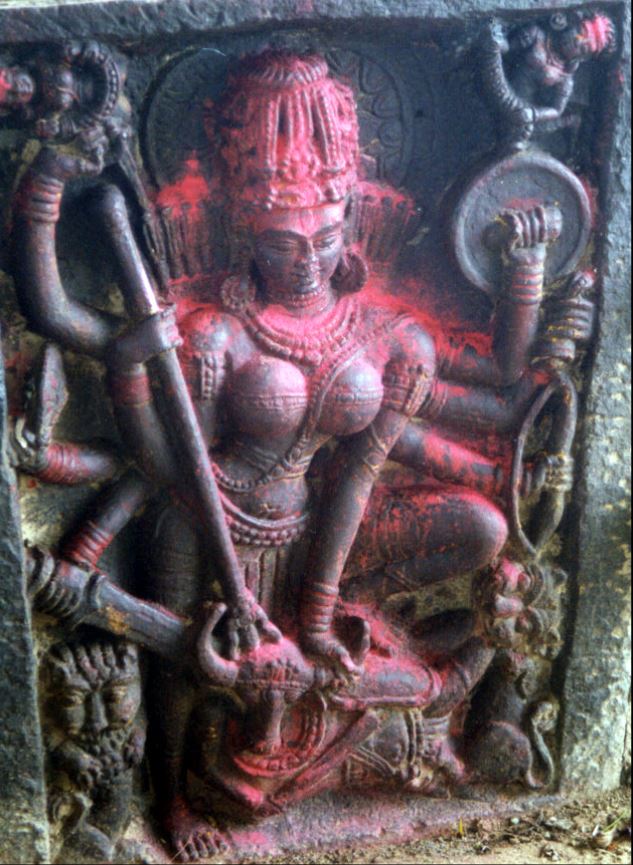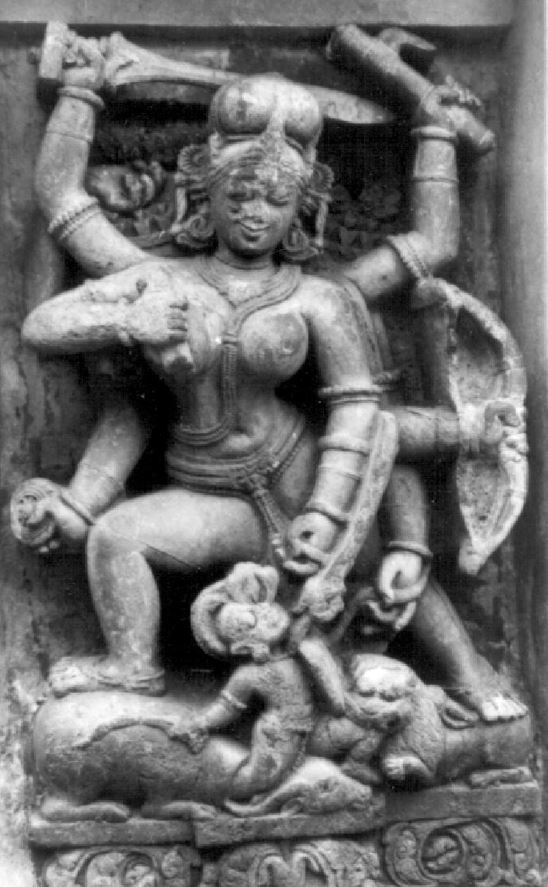Durga Worship India, the land of festivals, is known for its rich cultural heritage and religious diversity. One such festival that holds immense significance and devotion in the hearts of the people is Durga Puja. Celebrated with great reverence and enthusiasm, Durga Puja is an integral part of the lives of millions of Indians. Today, we shall delve into the unique and vibrant celebration of Durga Puja in the Upper Mahanadi Valley of India.
The Upper Mahanadi Valley, located in the eastern state of Odisha, is a region known for its strong cultural customs and traditions. Here, the worship of Goddess Durga during the annual Durga Puja is an integral part of the social fabric. The entire valley comes alive with fervor and enthusiasm during this time, as it marks the triumph of good over evil.
The Durga Puja in the Upper Mahanadi Valley is an extravagant celebration that spans over several days. Elaborate arrangements are made to welcome the deity with grandeur. The preparation for this festival starts months in advance, with local communities collectively raising funds and forming committees to ensure a successful and grand celebration.
One of the unique aspects of Durga Puja in this region is the creation of beautifully adorned and intricately crafted idols of Goddess Durga. Artisans invest their time and skills to construct these idols with utmost precision and devotion. These idols are often made using clay, straw, and other eco-friendly materials, promoting the idea of sustainability and the preservation of the environment.
The celebrations kick off with the arrival of the idol of Goddess Durga on a beautifully decorated palanquin, accompanied by traditional music and dance performances. The streets are adorned with vibrant decorations, illuminations, and colorful patterns called ‘rangolis.’ The entire neighborhood comes together to witness the procession and offer their prayers to the goddess.

You can read our another post on Influence of Sri Chaitanya Bhakti in Odisha
During the puja, devotees observe strict fasting and engage in various rituals and cultural activities. People dress in traditional attire, and the air is filled with the fragrance of incense sticks and the sound of devotional songs and mantras. It is a time for people to gather with family and friends, offering their prayers and seeking the blessings of Goddess Durga.
The Upper Mahanadi Valley also hosts various cultural programs, including classical dance and music performances, as a part of the festivities. These performances not only entertain but also reflect the rich cultural heritage of the region. It is a time for artists to showcase their talents and for the locals to revel in the celebrations.
The Durga Puja celebrations culminate with the Visarjan, where the idol of Goddess Durga is immersed in a nearby river or water body. This ritual symbolizes the departure of the goddess and is accompanied by a mix of joy and melancholy in the hearts of the devotees. The immersion is a beautiful sight to behold as the river becomes a sea of devotees bidding farewell to their beloved deity.
Durga Puja in the Upper Mahanadi Valley is not just a religious festival; it is a celebration of empowerment, unity, and the triumph of good over evil. The entire community comes together, breaking barriers of caste and creed, to offer their prayers and seek blessings. It is an occasion that fosters a sense of togetherness and reminds us of the strength and divinity within each individual.
As Durga Puja continues to evolve and embrace modernity, the core essence of devotion and reverence remains intact in the Upper Mahanadi Valley. The festival brings people closer, strengthens social bonds, and serves as a reminder of the importance of spiritual and cultural traditions in our lives.
So, if you ever wish to experience the beauty, grandeur, and divinity of Durga Puja, make your way to the Upper Mahanadi Valley. Witness the devotion, immerse yourself in the enchanting rituals, and be a part of a celebration that transcends boundaries and unites people in the worship of the powerful and beloved Goddess Durga.

Write A FAQ For Durga Worship in UpperMahanadi Valley
What is Durga worship in the Upper Mahanadi Valley?
Durga worship in the Upper Mahanadi Valley refers to the religious practice of venerating the goddess Durga, a powerful Hindu deity associated with divine feminine energy and resilience. This worship involves various rituals, prayers, and offerings made to seek the blessings and protection of the goddess.
Where is the Upper Mahanadi Valley located?
The Upper Mahanadi Valley is situated in the eastern part of India, primarily covering the states of Chhattisgarh and Odisha. It is a region known for its natural beauty and cultural heritage, with numerous temples and sacred sites dedicated to various deities, including Durga.
What are the main rituals and customs observed during Durga worship in the Upper Mahanadi Valley?
During Durga worship in the Upper Mahanadi Valley, devotees engage in several rituals and customs. These include fasting, reciting prayers and hymns dedicated to the goddess, conducting elaborate puja ceremonies, and organizing processions with music and dance performances to celebrate the victory of good over evil.
Are there any specific festivals associated with Durga worship in the Upper Mahanadi Valley?
Yes, there are several festivals closely associated with Durga worship in this region. The most prominent among them is Durga Puja, a grand celebration that lasts for nine days. During this festival, intricate and artistically designed idols of the goddess are worshipped with great fervor and enthusiasm. Additionally, Navaratri, a festival dedicated to the nine forms of Durga, is also celebrated with religious zeal.
What is the significance of Durga worship in the Upper Mahanadi Valley?
Durga worship holds immense cultural and religious significance in the Upper Mahanadi Valley. It is believed that by worshipping and seeking the blessings of the goddess, devotees attain strength, protection, and success in their endeavors. Durga is revered as the divine embodiment of shakti (power) and her worship symbolizes the triumph of good over evil, making it an integral part of the region’s cultural fabric.
